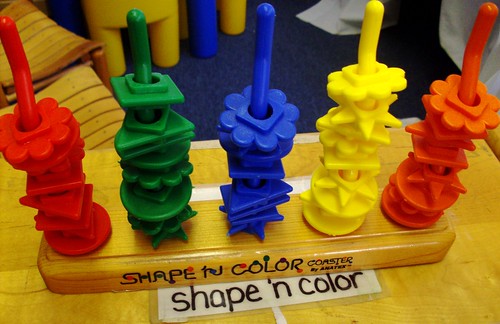A Brief Overview1
In the Typical Cognitive Development section of this course, we described how cognitive development involves the development of thinking or evaluation and coping, or ‘adaptation’ skills. Thinking or evaluation skills, such as “thinking outside the box2 (see full Glossary),” are related to the development of intelligence (see full Glossary). Coping skills involve the ability to adapt to changes in one’s environment. Cognitive skills also look at creativity, the ability to learn new things, retain (see full Glossary) what one has learned, and how one applies information to new situations. Cognitive development also includes pre-academic and academic skills that children need in order to succeed at school. Examples might include the ability to sit quietly for certain periods of time, the ability to listen and follow instructions and the ability to perform paper and pencil tasks.
Some children do not develop these skills at par with their peers. They may develop some of these skills much later than others —or not develop them at all. In other words, atypical cognitive development involves difficulties with both the quality and quantity of certain skills (see full Glossary):
Severe cognitive delays often effect all other areas of development. Below are some signs of cognitive delays that can be observed in all areas of development between the preschool and school age years, around ages 3 – 5 years old.
In the domain of cognitive development:
- Children may experience serious difficulties in learning basic concepts (e.g. colors and shapes);
- Children may experience serious difficulties in learning advanced concepts (e.g. counting, reading and writing);
- Children may experience serious difficulties in generalizing what they learn from one situation to the next;
- Children may experience serious difficulties in adapting to changes in their environment and to new situations.
In the domain of social/emotional development:
- Children may trust others too easily and readily enabling others to take advantage of them;
- Children may not read visual or language cues as they their attempt to socialize with others.
In the domain of motor development:
- Children may exhibit delays in the development of their fine motor skills;
- Children may exhibit delays in the development of their gross motor skills
In the domain of communication development:
- Children may exhibit delays in the development of their receptive language skills;
- Children may exhibit delays in the development of their expressive language skills;
- Children may exhibit delays in the development of their pragmatic skills;
- Children may exhibit delays in the development of their articulation skills.
In the domain of adaptive skills:
During the preschool years:
- Children may be delayed in becoming toilet trained, and in extreme cases, may never be toilet trained.
During the elementary school years:
- Children may experience difficulties bathing and cleaning themselves properly;
- Children may experience difficulties with dressing and undressing.
During the high school years:
- Male adolescents may experience difficulties with knowing how and when to shave;
- Female adolescents may experience difficulties knowing how to handle their menstrual cycle.
Severe cognitive delays have been linked to developmental disabilities (also known as mental retardation and developmental challenges). Developmental disabilities involve global delays and affect all areas of development, including motor, language, social and emotional, and self-help skills.


